Yes, it’s been another year since I first bought Trainz 2012, and our love-/hate-affair began. Here’s a recent picture of how far I’ve come:
Here’s what I started out doing (with bridges):
I think the top one’s a little better.

The west end of Machinaton is usually buzzing with activity, given the triple track mainline running alongside the loading track for the Machina Power Facility, the electric plant that supplies most of the Machina Oblast with power. However, on this clear (ish) morning, we see a nearly deserted railway.
Parenthetically, the Machina Power Facility is one of the largest on Treyanis, as Machina Oblast is one of the most heavily populated regions on the planet.
Combination of two post ideas today. First, a few more shots from Iron Mountain Pass, then I’ll give my impressions on Trainz: A New Era’s current released actual version.
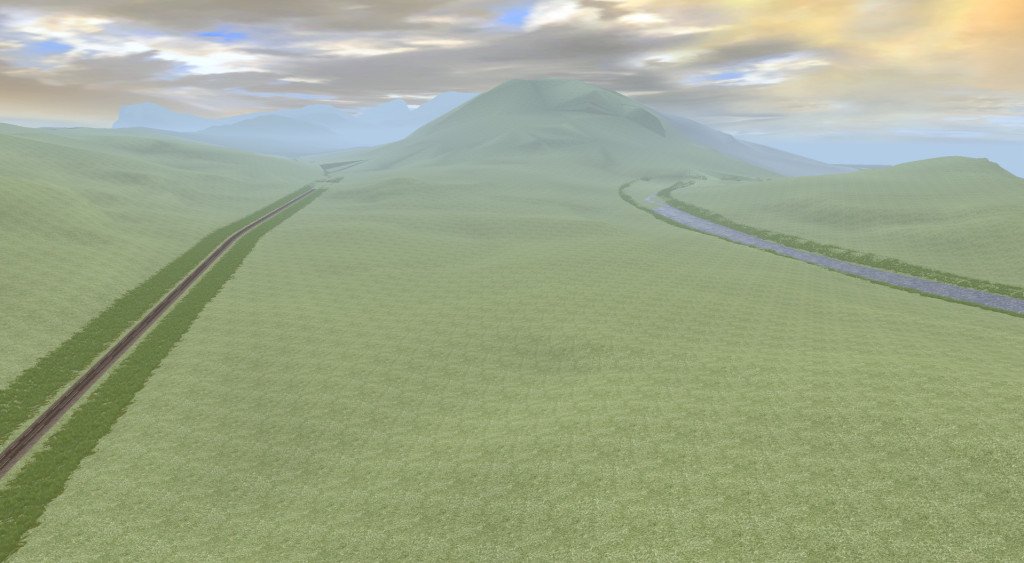
The railroad and the river diverge here. There will, eventually, be a town here of to-be-determined size.
Now: T:ANE impressions. I like it. I like the game very much. Importing content from Trainz 12, the previous game, is remarkably tedious, but not entirely onerous and the game can either look or run like a dream. I say either; I’m sure that on an extremely high-powered computer, one could get acceptable framerates with the gorgeous graphics that the new engine lends the game. However, I’m beginning to realize that my computer is probably in the higher middle range, not the high end, and so if I turn up post processing (which makes the game look its best), I get a slideshow. So I intend to build my routes with low graphical settings, and do screenshot runs with higher settings. But, even with these and a few other minor problems, I find I like the game very much. I haven’t played around too much with this version (all these Iron Mountain Pass shots were taken on the pre-release version), but I think it will be a very worthy successor to the Jet engine-based Trainz series, and an excellent platform for the next generation of Trainz games to be constructed upon.
I recently purchased Trainz: A New Era (referred to as “T:ANE” or “TANE”). I knew that, when I bought it, the megaroute that I’ve shown off recently would be ported over to it. T:ANE is not “officially” released yet, but if you pre-order the game as I did you get access to the “beta” or “release candidate” version of the game, which is what I have. Having mostly successfully ported the route over, the following is a screenshot (gotten with some difficulty) of Saint John, the capital city of Dertinia and the main city of the route, in the game. I love the new water reflections to death, but more importantly, now you can see the whole skyline from one location.
I think it’ll do nicely as my new banner.
Don’t look too closely at the route; it’s not the focus here. The main focuses of this post are the BN caboose and fuel tender (the tank car). Both the cars and the route are, of course, WIPs; in fact, let us assume that all my work is a Work In Progress unless I explicitly state otherwise, shall we? Any rate, I recently had a craving for a Burlington Northern caboose, something which I didn’t have. I decided to make one myself, and it turned out so well that I thought I might as well repaint a BN fuel tender as well–although that skin didn’t turn out as well. I took a number of screenshots–I mean, pictures of a very long manifest BN manifest as it climbed Iron Mountain Pass with the new assets just earlier this week. Enjoy!
Yes! It has officially been two years since I first purchased Trainz Railroad Simulator 2012, and embarked on this epic journey I have designed myself. To commemorate this special occasion, I thought I would compare my first ever route from when I first created it to its current state. Unfortunately, I don’t have any screenshots from that now long-distant time, so suffice it to say it was pretty horrible. The trackwork was uneven, the texturing was atrociously uninteresting, and the scenery, while existent and not too bad, was bland and rather boring and most certainly not what I had intended, which was the warehouse district of a large city. The earliest screenshots of the route in its former state I have are actually from this very blog, I believe (see post #4). Below are screenshots of the route now. As those of you with good memories and eyes may have noticed, the route is now included in my largest route to date, the Yazhtan Peninsula. The work done on it to this point has, I think, truly captured the goal of the original route; it looks like a large warehouse district in a large city. Because the city is near the equator of Gardaka, I have also taken the liberty of planting tropical plants and shrubbery. Please do note that this is still very much a WIP, as most of my routes are. Still, though, I think it looks really good. But don’t take my word for it; see for yourself.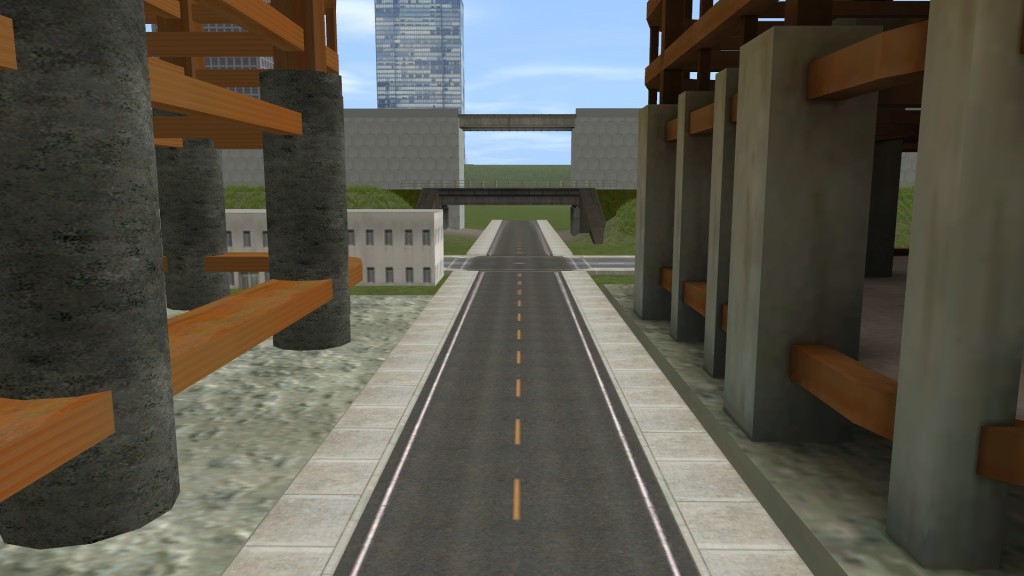
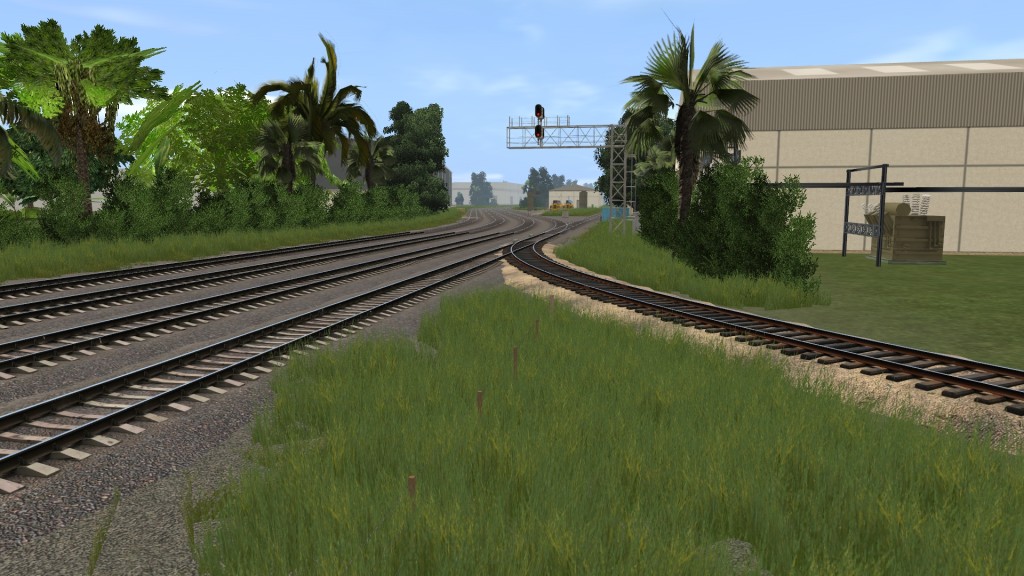
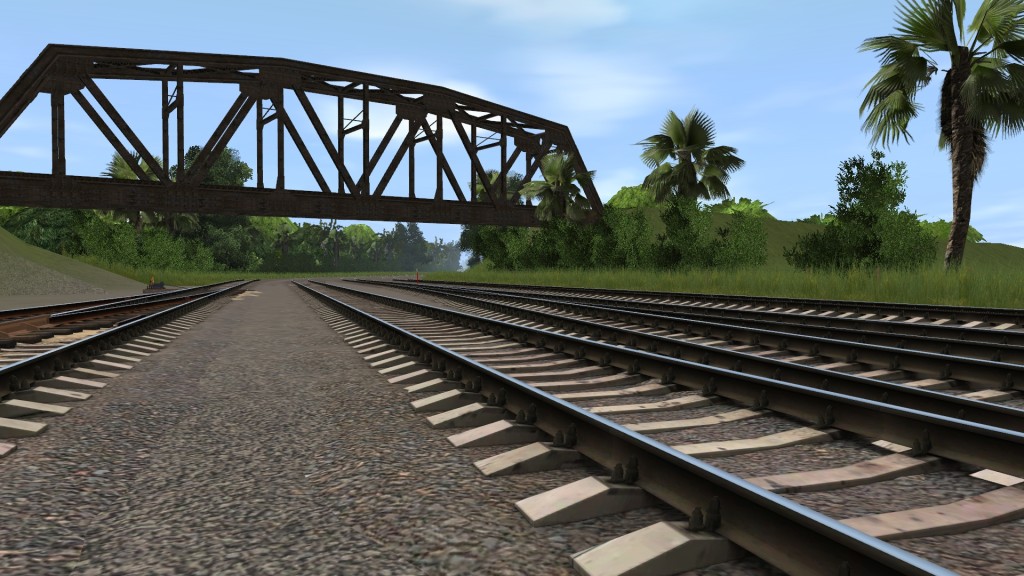
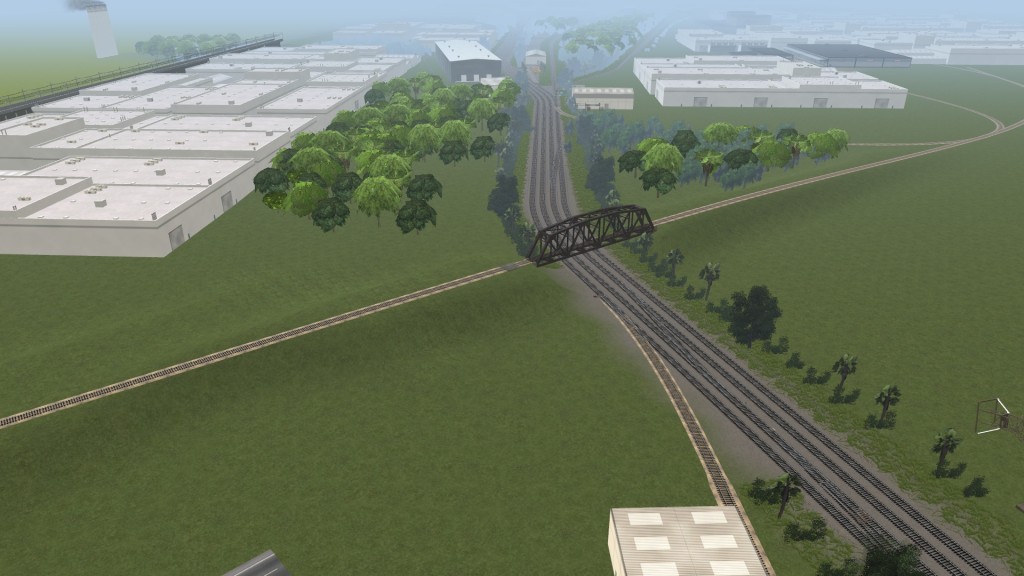
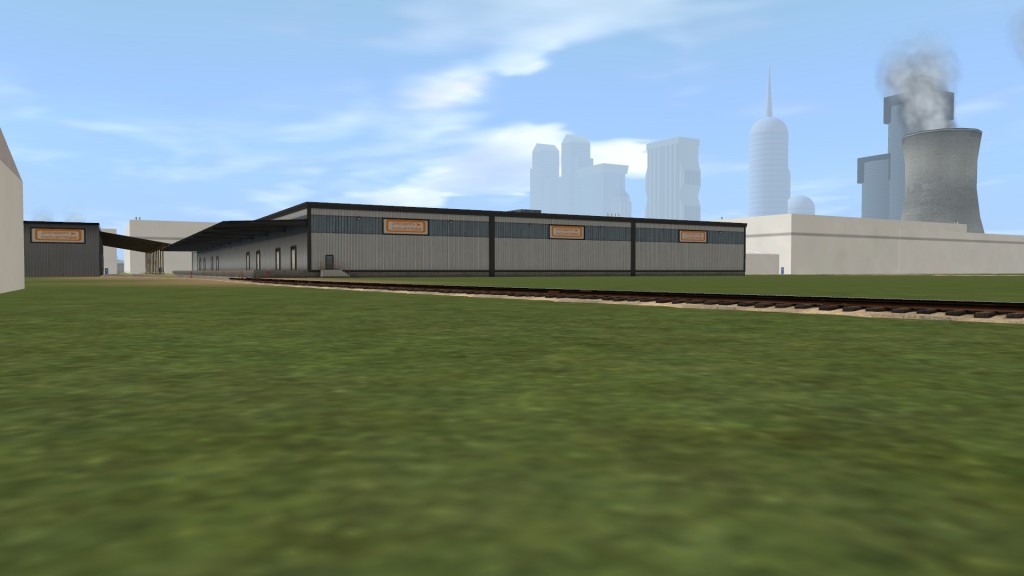
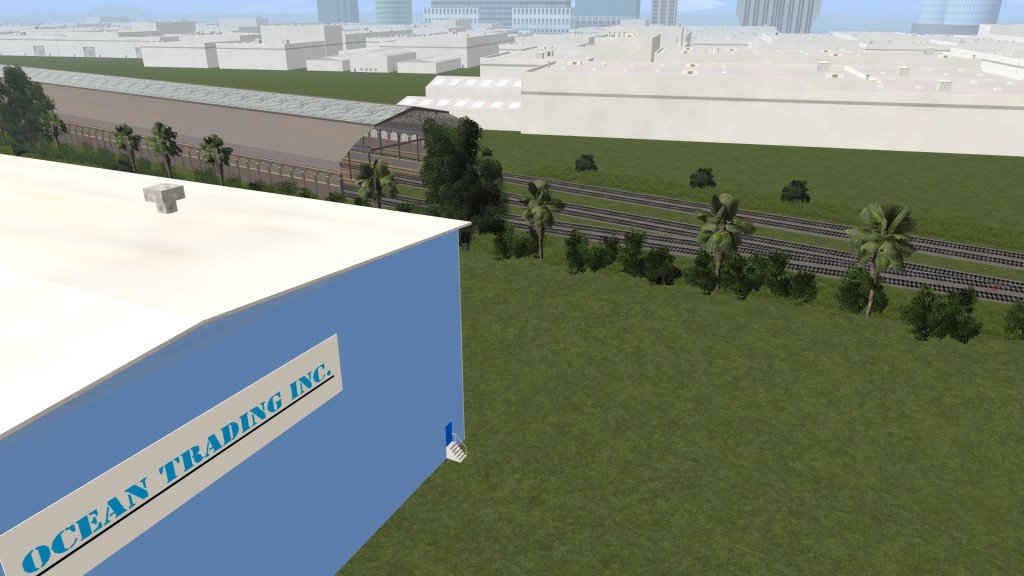
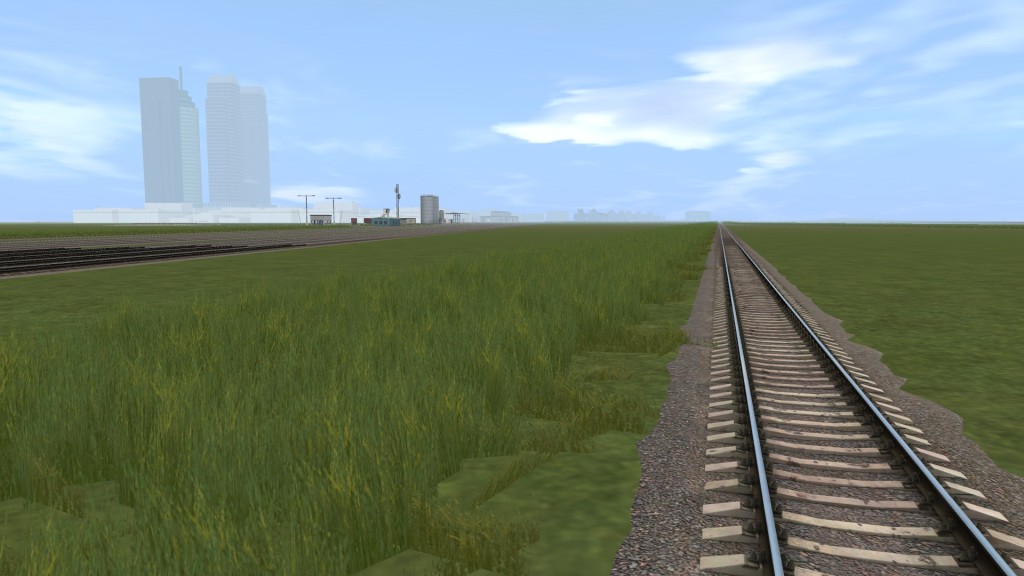
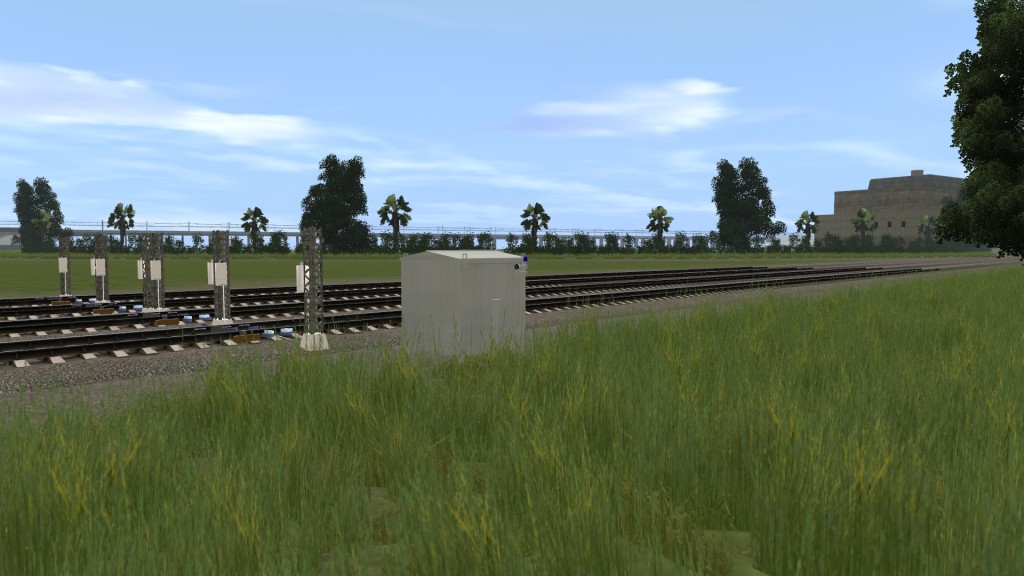
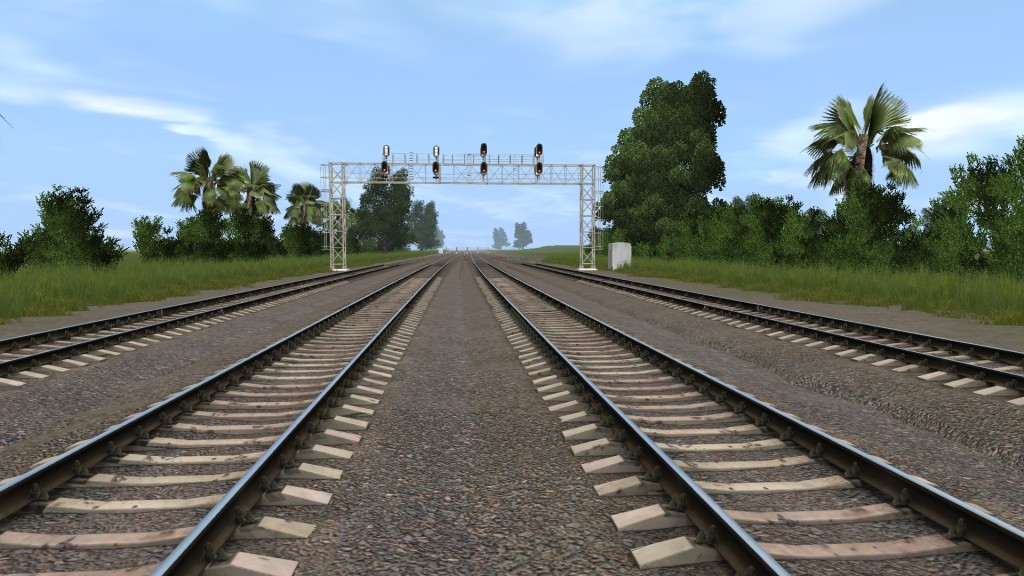
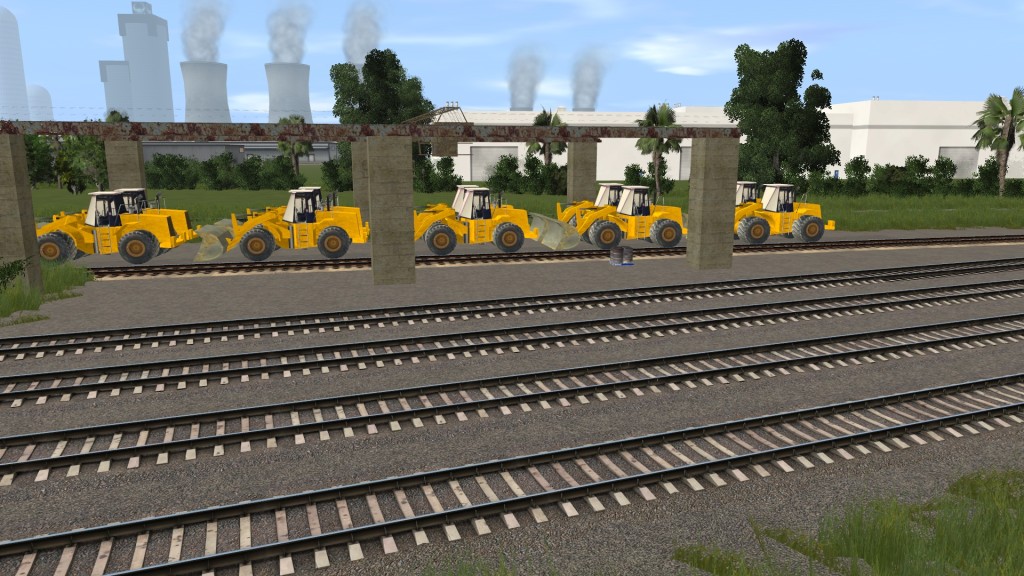
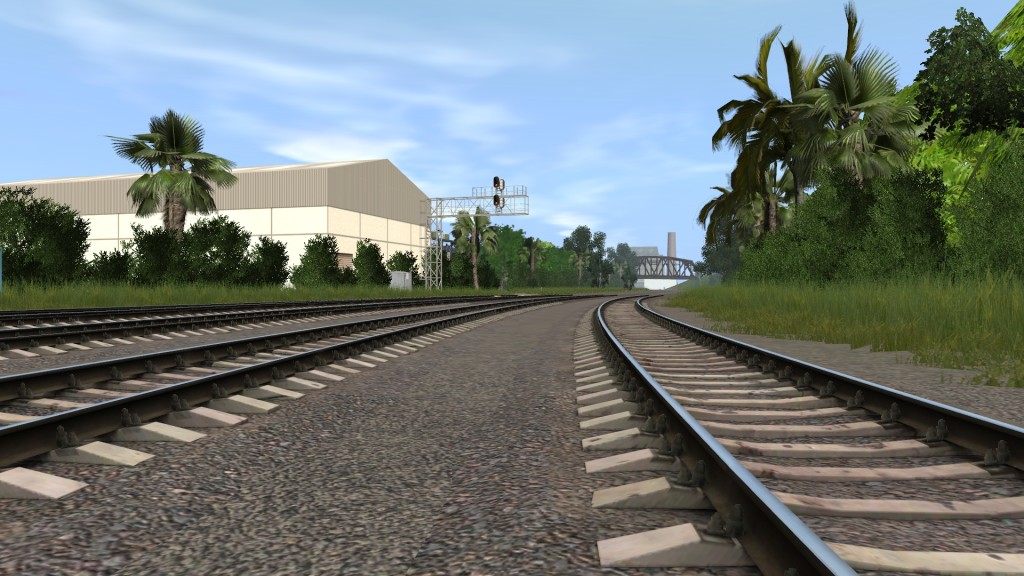
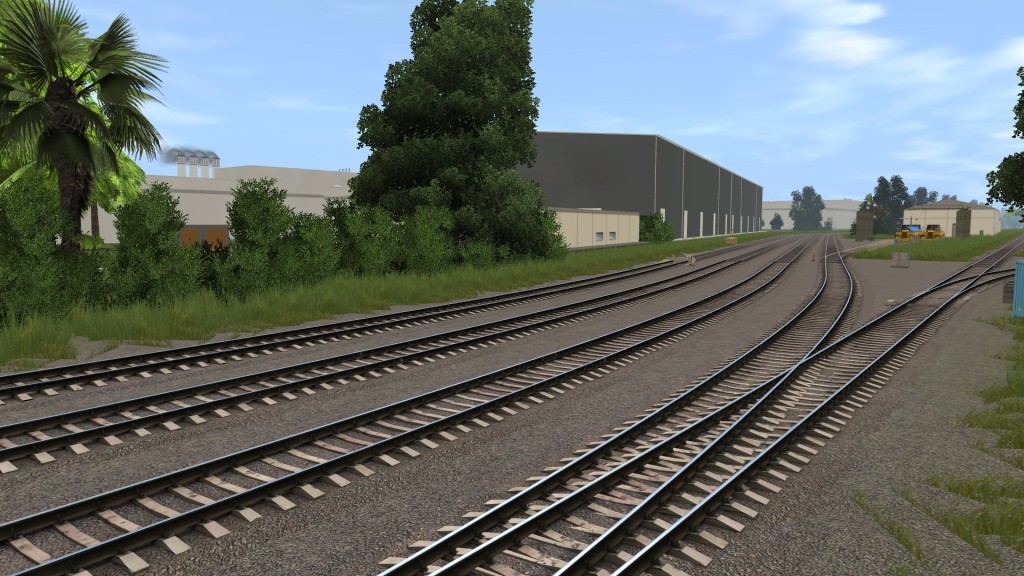
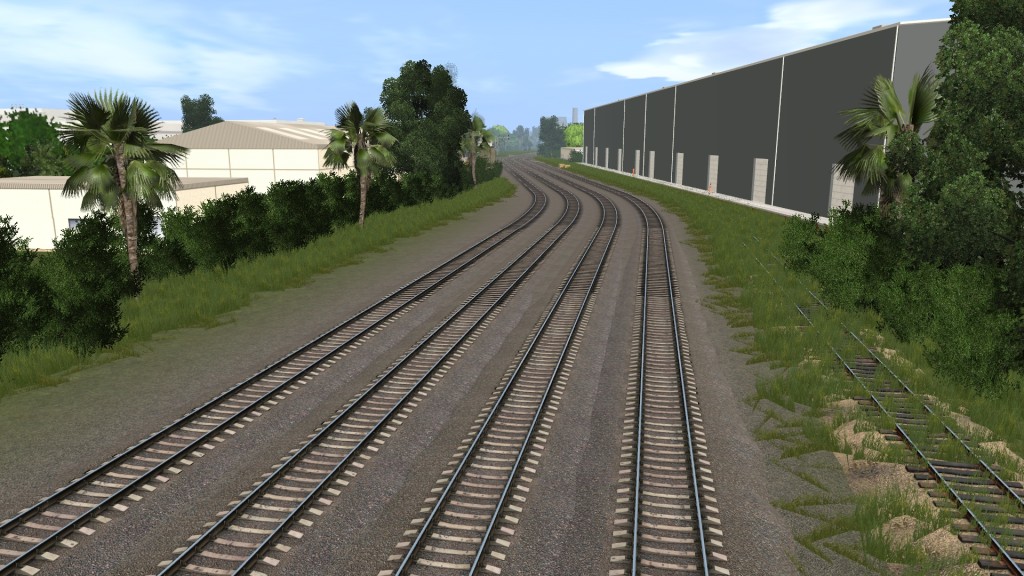
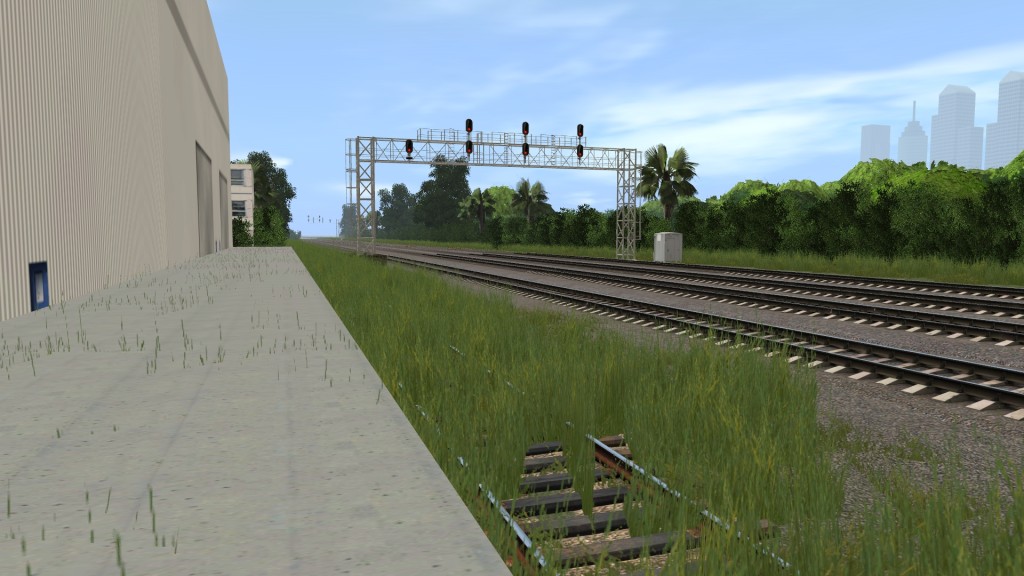
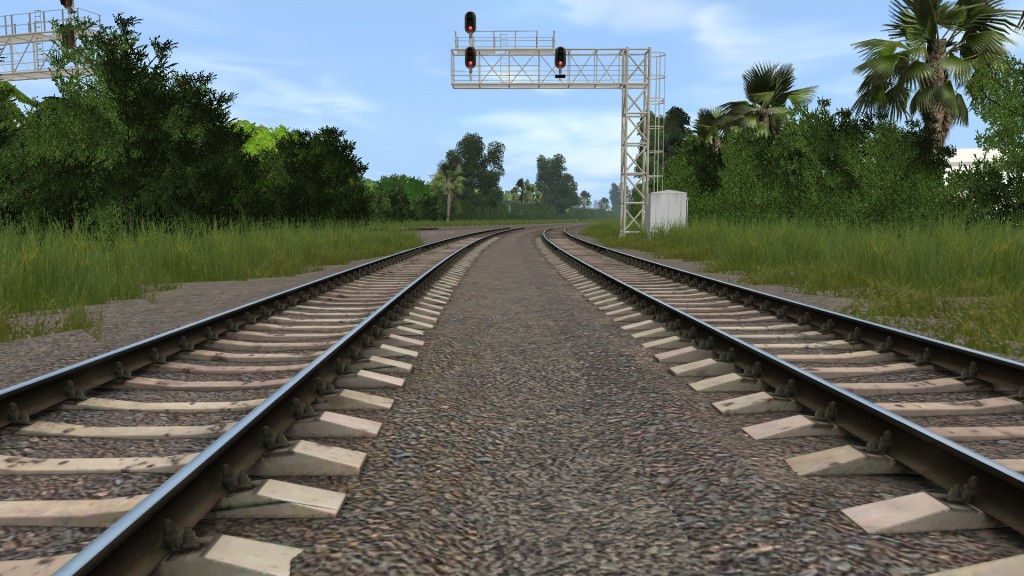
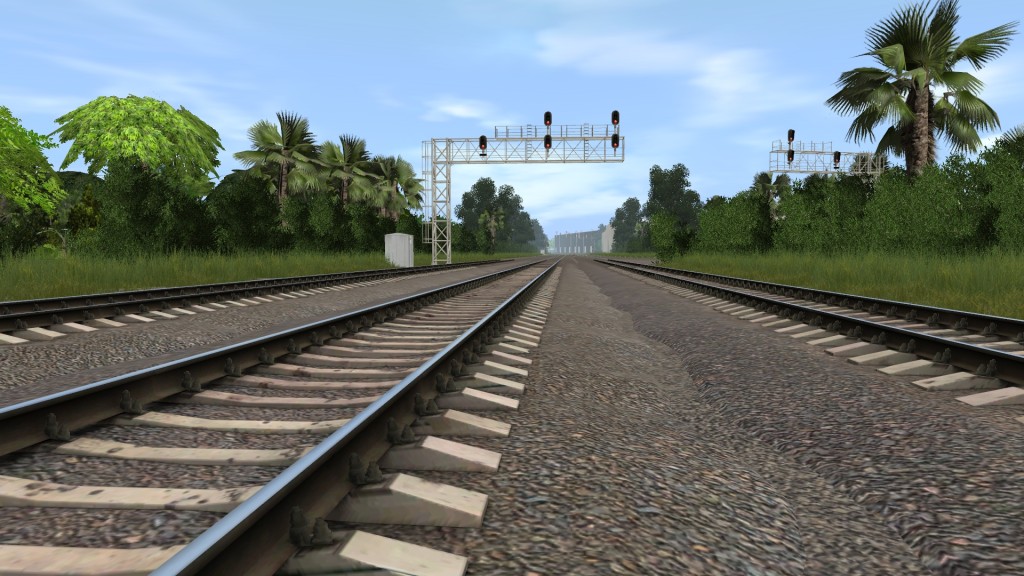
Yes! I am, in fact, still alive and have been very busy working on a very large route project in between large deluges of homework. There is still weeks of work to be done–and that’s if I work on this project 24 hours every day for those weeks–so please excuse any obvious signals that this is very much a Work In Progress (hereafter known as a “WIP”). However, with that said, here’s a taste of the scale of this route, with more pictures to come soon.
This is Dertinia’s Yazhtan Peninsula (as of last month, it’s changed a fair bit since but I haven’t any current screenshots). The capital of Dertinia, St. John, is the large grey area bordering the blue area at the bottom of the map, toward the center. More to come soon™!
WARNING: LARGE NUMBER OF PICTURES
Welcome to Serkafka. This is the route which has been hinted at in previous posts. Its name is officially “The Serkafkan Grand Trunk Line,” and it connects southern Sondia and Odessa with the west. A short history on Serkafka will be forthcoming; to place it here would not be prudent according to our editors, so we shall go straight to the photographs.
The overview of this route, because it is so large, will be broken up into three parts. The first is this one, following an enormous 151-car Hy-Line Rail manifest over the southern portion of the route up until Machina Yard. The second part will detail the operation of Machina Yard and the surrounding area, and the third part will follow a Serkafkan Independent Government Railways train over the mountain range that necessitated the construction of the line in the first place. And so, without further ado, HLR train M-1284.
We start after the crossing of the Eezh river as M-1284 growls and squeals around a rather large bend. Up front are three RGE products, an HLR ES44AC, an FCR H-CF44AC-B1, and an RGE DASH 9 demonstrator unit currently belonging to SAYZ (Serkafkan Indepentdent Government Railways). On the rear end of the train are a pair of FCR helpers, tacked on to help the train with the rather stiff gradients to the east of here.
Most of the railways in the east of the Roman continent follow the same specifications for couplers, brakes, track gauge, axle loading, etc. This is because of the St. John International Railway Standards Agreement, or SIRSA. SIRSA created an international standard system based on Vidalian standards, covering everything from crashworthiness standards to rail weight in pounds per yard and allowing for many disparate countries to interchange equipment, as is evidenced here. Some countries, like Dertinia, chose not to follow this agreement, but many countries did agree to the regulations on both Roma and the Kasversas.
You can clearly see here the mammoth length of this train. We found out later that this train was hauling the entire contents of a small Odessian yard, and the train shrank considerably after Machina Yard–but that’s for later.
Pumping stations like this one at Dokya are fairly common throughout Serkafka. To simplify their purpose, let’s just say that they take bad water, turn it into good water, and pump it into the national water system.
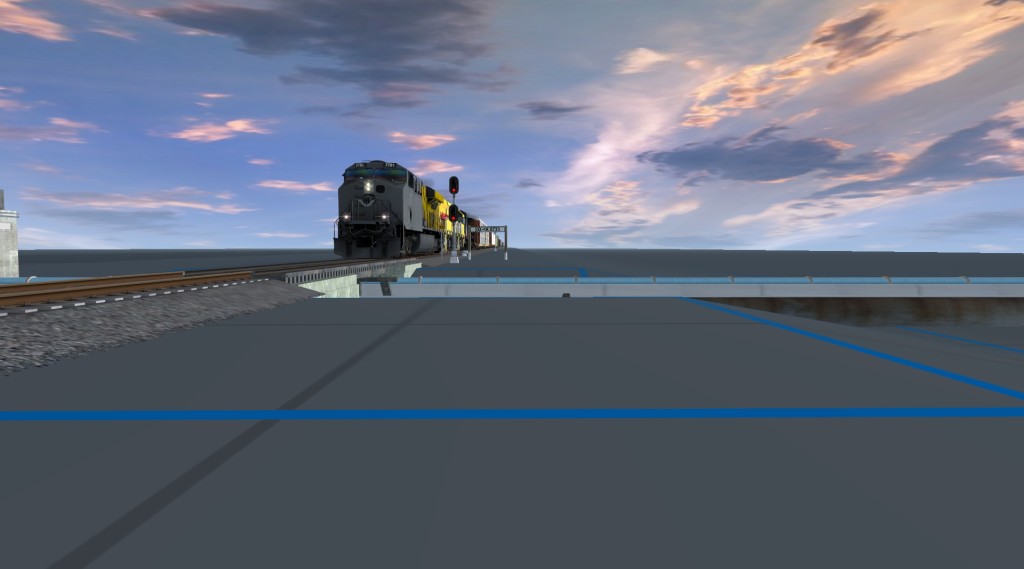
M-1284 hits the west switch of Dokya siding and growls over the pipe bridge that carries the trunk line over the pumping station’s pipes.
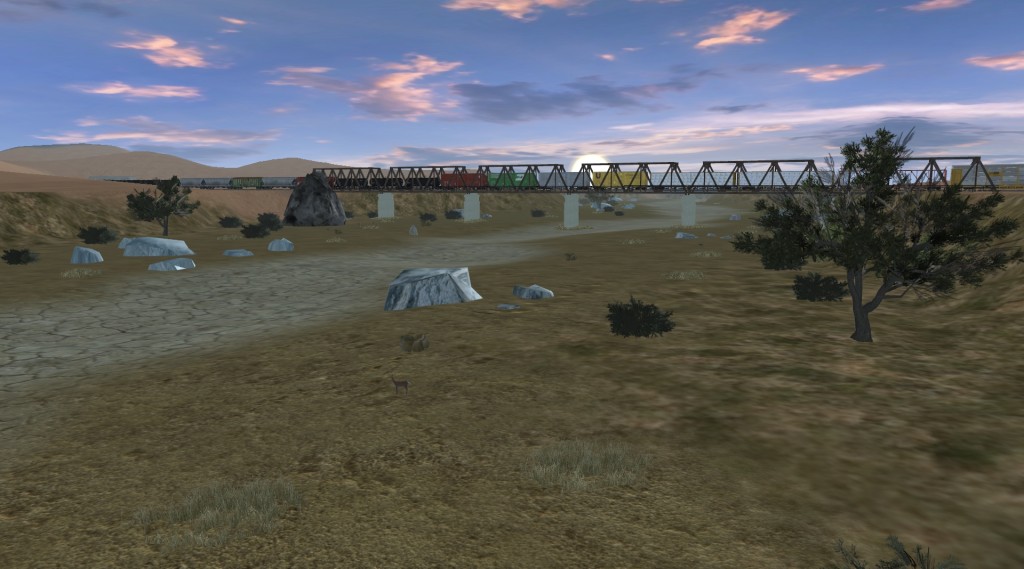
The train crosses a dry wash. There is water here, but it’s usually underground. The wash has flooded enough in the past to carve itself a miniature canyon, though. (I’m very proud of this scene in particular.)
Machina Yard lies conveniently at the convergence of four major rail lines in Serkafka: the Southern Grand Trunk Line to the south, the Main Grand Trunk Line to the north, the Reefyadas Cargo Line to the east, and the Dokcha Mainline to the southeast. This means that the yard is almost always crowded; however, for inexplicable reasons, the yard will sometimes completely empty out, leaving lots of rail and no railcars. Such was the case today as M-1284 rolled smoothly to a stop in front of the crew office.
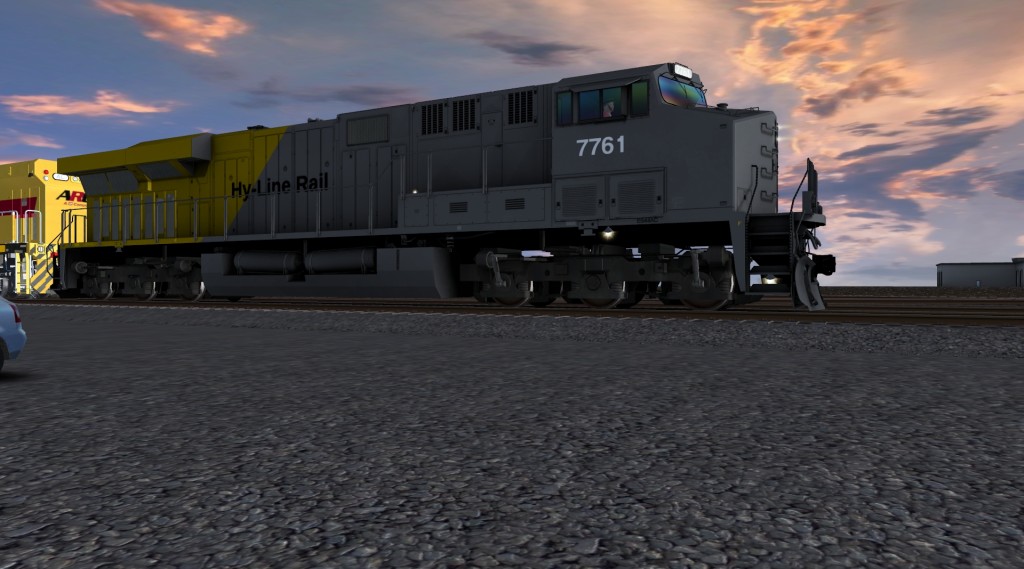
A final shot of M-1284 as we say goodbye to it here in Machinaton (the town in which Machina Yard resides).
Thanks for reading, and stay tuned for part 2 where we’ll cover the fascinating operations of Machina Yard!